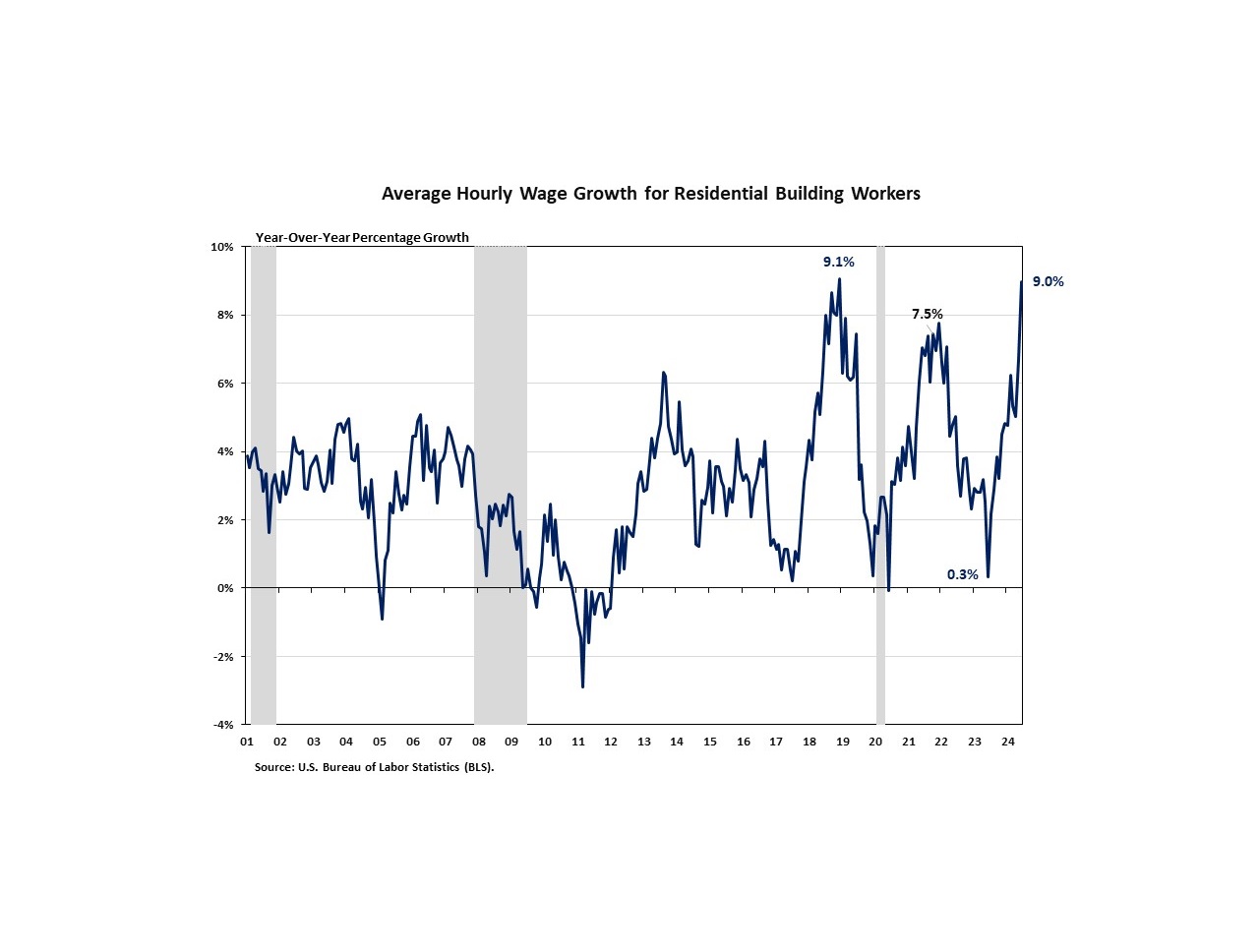Residential Building Wages See Fastest Growth in More Than Five Years
The housing industry’s ongoing skilled labor shortage and the nation’s lingering inflation continue to spur accelerated wage growth. Residential building workers’ wage growth increased in June at its fastest year-over-year rate since December 2018.
According to the Bureau of Labor Statistics, average hourly earnings for residential building workers* was $32.28 per hour in June 2024, up from $29.62 per hour one year ago.
Compared to other industries, the average hourly earnings amount for residential building workers in June was:
- 16.2% higher than the manufacturing industry ($27.79)
- 10.6% higher than the transportation and warehousing industry ($29.18)
- 11.1% lower than the mining and logging industry ($36.33)
However, demand for construction labor is weakening as interest rates remain elevated. The number of open construction sector jobs notably declined to 295,000 in June. Nonetheless, the ongoing skilled labor shortage continues to challenge the construction sector.

NAHB Economist Jing Fu originally provided this analysis in the Eye on Housing blog.
* Refers to production and non-supervisory workers in the residential building industry. This group accounts for approximately two-thirds of the industry’s total employment.
Latest from NAHBNow
Dec 23, 2025
Lumber Capacity Has Peaked for 2025An annual revision to the Federal Reserve G.17 Industrial Production report shows current sawmill production levels above 2017 by 7.5%, but just 0.3% above 2023 levels.
Dec 22, 2025
Can Offsite Housing Solve the Housing Affordability Crisis?Offsite construction – a method in which components are planned, designed, fabricated in a factory setting and then transported and assembled onsite – is something more community-based organizations (CBOs) are turning to as a solution to the housing affordability crisis.
Latest Economic News
Dec 22, 2025
State-Level Employment Situation: September 2025In September 2025, nonfarm payroll employment was largely unchanged across states on a monthly basis, with a limited number of states seeing statistically significant increases or decreases. This reflects generally stable job counts across states despite broader labor market fluctuations. The data were impacted by collection delays due to the federal government shutdown.
Dec 19, 2025
Existing Home Sales Edge Higher in NovemberExisting home sales rose for the third consecutive month in November as lower mortgage rates continued to boost home sales, according to the National Association of Realtors (NAR). However, the increase remained modest as mortgage rates still stayed above 6% while down from recent highs. The weakening job market also weighed on buyer activity.
Dec 18, 2025
Lumber Capacity Lower Midway Through 2025Sawmill production has remained essentially flat over the past two years, according to the Federal Reserve G.17 Industrial Production report. This most recent data release contained an annual revision, which resulted in higher estimates for both production and capacity in U.S. sawmills.
